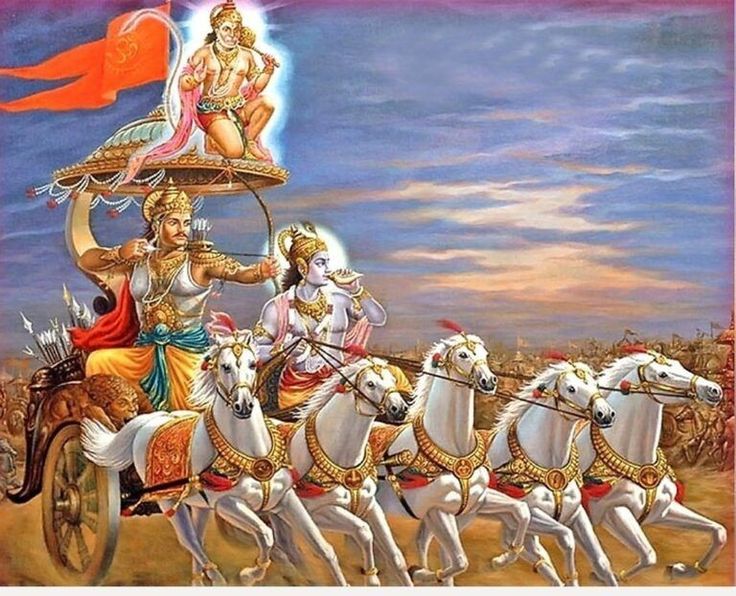The Bhagavad Gita, often referred to as the Gita, is a 700-verse Hindu scripture that is part of the Indian epic Mahabharata. It is a conversation between Lord Krishna and the warrior Arjuna, who is struggling with his duty as a warrior during a great battle. In the midst of the conversation, Krishna imparts invaluable wisdom on various paths to achieving spiritual enlightenment, one of which is Karma Yoga.
Karma Yoga, also known as the path of selfless action, is considered one of the four main paths to spiritual liberation in Hindu philosophy. It is the path of dedicating one’s actions to the service of others, without attachment to the outcomes or rewards. The Bhagavad Gita explains that by performing one’s duties with a pure and selfless heart, one can attain spiritual enlightenment and ultimately unite with the divine.
One of the key teachings of Karma Yoga is the concept of Nishkama Karma, which means performing actions without any desire for personal gains or rewards. The Gita suggests that we should focus solely on doing our duty for the greater good, without getting attached to the results. This detachment from the outcomes helps in maintaining peace and equanimity, regardless of success or failure.
More: Wanted to download Odishashop.com visit here

Krishna emphasizes that everyone has certain responsibilities and duties based on their natural inclinations and social roles. He encourages Arjuna, as a warrior, to fulfill his righteous duty of fighting for justice and upholding Dharma (righteousness). However, Krishna emphasizes the importance of performing these actions as a service to others and not for personal gain or egoistic reasons.
Karma Yoga teaches us that our actions have consequences, which can either lead us towards spiritual liberation or bind us to the cycle of birth and death. By performing selfless actions, we accumulate positive karma that helps in purifying our mind and elevating our consciousness. This leads to a gradual liberation from the material world and paves the way for union with the divine.
Furthermore, Karma Yoga teaches us to not judge others based on the fruits of their actions. It emphasizes the importance of accepting all actions equally and without prejudice, recognizing that everyone is on their own spiritual journey. By adopting a non-judgmental approach, we can cultivate a sense of empathy, compassion, and understanding towards others.
In today’s fast-paced and materialistic world, the teachings of Karma Yoga hold great significance. It reminds us of the importance of selflessness, compassion, and performing our duties with sincerity and dedication. It encourages us to let go of our ego, attachment, and desire for personal gain, and instead focus on serving others and contributing to the betterment of society.
You can read our another post on Dhanu Jatra in Odisha

Write A FAQ For Karma Yoga examples from the Bhagavad Gita
What is Karma Yoga in Bhagavad Gita?
Karma Yoga is a path to spiritual enlightenment taught in the Bhagavad Gita, a sacred Hindu scripture. It emphasizes selfless action without attachment to the results, promoting the idea of performing one’s duty without seeking personal gains.
How does Karma Yoga work?
Karma Yoga suggests that by performing one’s duties selflessly and without any desire for rewards, individuals can achieve spiritual growth and liberation. It encourages individuals to focus on the present moment, act selflessly, and offer their actions as a dedication to a higher power.
Can anyone practice Karma Yoga?
Yes, Karma Yoga is suitable for anyone regardless of their occupation or social status. It can be practiced by individuals from any walk of life – whether they are professionals, householders, or monks. The key is to approach one’s duties and responsibilities with the right mindset of selflessness and detachment.
What are the benefits of practicing Karma Yoga?
Practicing Karma Yoga brings several benefits, such as developing a selfless attitude, reducing ego, and cultivating a sense of equanimity towards success and failure. It helps individuals overcome selfish desires, enhances their focus and concentration, and promotes a sense of inner peace and contentment.
How can one incorporate Karma Yoga into their daily life?
To practice Karma Yoga in daily life, one can start by recognizing their duties and responsibilities and performing them with dedication, integrity, and selflessness. It is essential to let go of attachment to the outcomes and act with a pure heart, without seeking recognition or personal gains. Regular self-reflection, cultivating gratitude, and offering the results of one’s actions to a higher power are other ways to integrate Karma Yoga into daily life.
Conclusion
In conclusion, the concept of Karma Yoga in the Bhagavad Gita offers profound insights into the path of selfless action and the pursuit of spiritual liberation. It teaches us to perform our duties without attachment to the outcomes, to focus on serving others, and to cultivate an attitude of acceptance and non-judgment. By incorporating these teachings into our daily lives, we can strive towards living a more meaningful and fulfilling existence.

